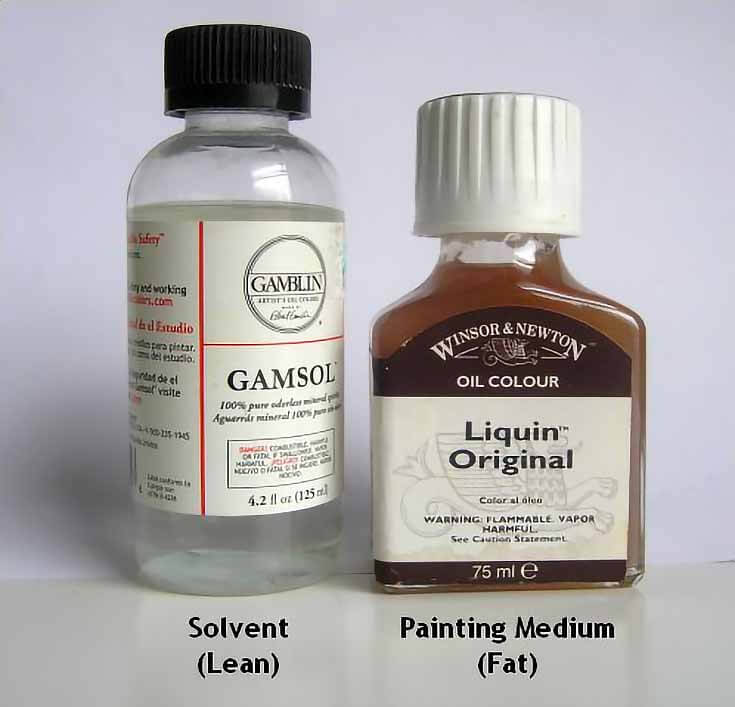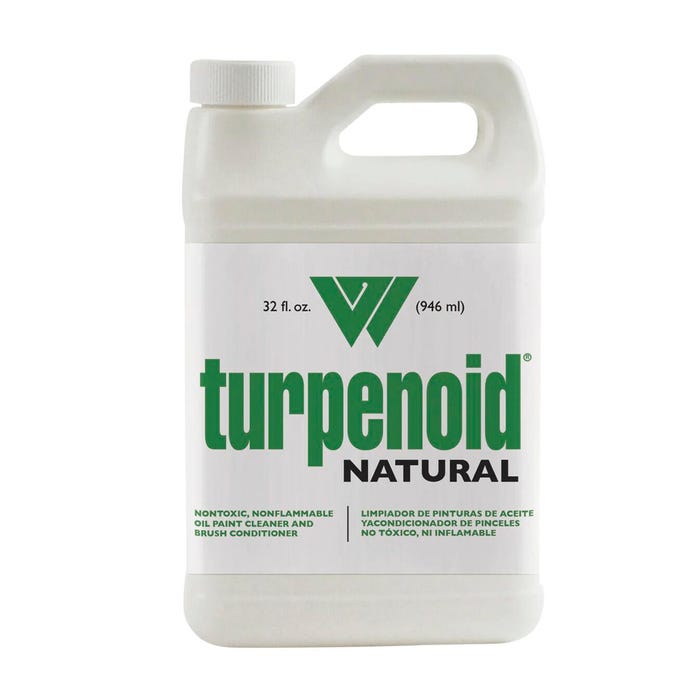Yes, oil paint is flammable. It is made up of pigments and oils that can easily ignite if exposed to heat or flames.
Oil paint is a popular medium used by artists for its unique properties and ability to create depth and texture in artwork. However, it is important to handle it with care due to its flammable nature. When working with oil paint, it is crucial to keep it away from any sources of heat or flames, such as candles, stoves, or open flames.
Proper ventilation and storage are also important to prevent the buildup of flammable vapors. Understanding the potential hazards of oil paint and taking the necessary precautions can help ensure a safe and enjoyable artistic experience.

Credit: emptyeasel.com
Contents
The Composition Of Oil Paint
Pigments And Binders
Pigments: Provide color and opacity.
Binders: Typically linseed oil or other drying oils.
Solvents In The Mix
Solvents: Help thin the paint for application.
Common solvents: Mineral spirits, turpentine, or odorless mineral spirits.

Credit: www.schoolspecialty.com
Flammability Of Oil Paint Components
When it comes to working with oil paint, understanding the flammability of its components is essential for safety. While oil paint is generally considered to be non-flammable once it has dried, certain components in the paint can pose a fire risk. In this article, we will explore two key factors that contribute to the flammability of oil paint: drying oils and volatile organic compounds (VOCs).
Drying Oils And Fire Risk
Drying oils are an integral part of oil paint and play a crucial role in its drying process. They are derived from natural sources such as linseed, walnut, and poppy seed, and undergo a chemical reaction known as oxidation when exposed to air. This reaction causes the oils to harden and form a solid film, resulting in the characteristic drying and curing of oil paint.
However, it is important to note that drying oils have the potential to become flammable during this oxidation process. The oxidation of drying oils generates heat, and if the heat is not properly dissipated, it can lead to a fire hazard. This is especially true when large quantities of drying oils are present, such as in oil-soaked rags or in the drying process of thick layers of oil paint.
To minimize the fire risk associated with drying oils, proper handling and storage techniques are crucial. It is recommended to store oil-soaked rags in a well-ventilated area or in a metal container with a tight-fitting lid to prevent the accumulation of heat. Additionally, ensuring that the drying process of thick oil paint layers is carried out in a well-ventilated space can help dissipate any potential heat buildup.
Volatile Organic Compounds (vocs)
Volatile organic compounds, commonly referred to as VOCs, are another important consideration when assessing the flammability of oil paint. VOCs are chemicals that can easily evaporate at room temperature, and they are present in many oil paint formulations as solvents or thinners.
While VOCs themselves may not be flammable, they can contribute to fire hazards due to their low flash points. Flash point refers to the minimum temperature at which a substance can ignite when exposed to an open flame or spark. If oil paint containing VOCs is exposed to a heat source with a temperature higher than its flash point, it can potentially ignite and lead to a fire.
It is crucial to be aware of the flash points of the specific VOCs present in the oil paint you are working with. Manufacturers typically provide this information on the paint container or in the product’s safety data sheet (SDS). By understanding the flash points and taking appropriate precautions, such as keeping oil paint away from heat sources and ensuring proper ventilation, the risk of fire due to VOCs can be minimized.
Oil Paint In Various States
Oil paint can vary in its flammability depending on its state. Understanding how oil paint behaves in different states is crucial for safety measures. Let’s explore oil paint in various states:
Wet Paint And Combustion
Wet oil paint contains volatile compounds that can ignite easily. The solvents in wet paint evaporate quickly, making it highly flammable. Keep wet oil paint away from heat sources to prevent combustion.
Dried Paint And Flammability
Dried oil paint is less flammable compared to wet paint. Once dried, the solvents have evaporated, reducing the risk of combustion. However, dried oil paint can still catch fire if exposed to high temperatures.
Safety Measures For Artists
When working with oil paints, it is essential to prioritize safety to protect both the artist and the environment. By following proper safety measures, artists can minimize the risks associated with flammable materials and ensure a safe creative environment.
Proper Ventilation
Proper ventilation is crucial when working with oil paints, as they emit harmful fumes that can be hazardous when inhaled. Artists should work in a well-ventilated area, ideally with a ventilation system or open windows to allow for air circulation. Using a respirator can also provide added protection against inhaling toxic fumes, especially in enclosed spaces.
Safe Storage Practices
Safe storage practices are vital for preventing accidents related to flammable materials. Artists should store their oil paints in a cool, dry place away from direct sunlight and sources of heat. Flammable solvents should be stored in tightly sealed containers and kept away from sparks, flames, or heat sources to reduce the risk of fire hazards.
Case Studies: Oil Paint Fires
Historical Incidents
Oil paint, with its highly flammable properties, has been involved in several historical incidents. The most notable historical incident involving oil paint was the Great Fire of London in 1666, where the highly flammable oil-based paints used at the time contributed to the spread and intensity of the fire. The combustible nature of oil paint has historically posed significant fire hazards, leading to devastating consequences in various incidents throughout history.
Modern-day Fire Reports
In modern times, there have been numerous fire reports directly linked to the flammability of oil paint. These incidents highlight the ongoing risk posed by oil-based paints. From residential fires to industrial accidents, the flammability of oil paint continues to be a significant concern. The modern-day fire reports serve as a stark reminder of the importance of understanding and mitigating the fire hazards associated with oil paint.
Myths Vs. Facts
Is oil paint flammable? Let’s debunk the myths and reveal the scientific facts behind this common concern.
Common Misconceptions
There is a common misconception that all oil paints are highly flammable, posing a significant fire hazard. Additionally, many people believe that oil-based paints will readily ignite when exposed to heat or flame. These misconceptions have led to widespread confusion and concern about the safety of using oil paints.
Scientific Explanations
Oil paints are indeed flammable due to the presence of combustible materials such as linseed oil and other organic solvents. When these paints are exposed to high temperatures or open flames, they can ignite and contribute to the spread of fires. The flammability of oil paints is a result of their chemical composition, which includes volatile components that can easily catch fire when exposed to heat or sparks.
Regulations And Standards
Regulations and standards play a crucial role in ensuring the safety of oil paints, especially in terms of flammability. Industry safety protocols, certifications, and labels are key aspects that determine the flammability of oil paints.
Industry Safety Protocols
When it comes to the flammability of oil paints, industry safety protocols are established to mitigate potential fire hazards. These protocols encompass the safe handling, storage, and transportation of oil-based products, ensuring strict adherence to fire safety measures in production facilities and during distribution.
Certifications And Labels
Certifications and labels provide valuable information regarding the flammability of oil paints. Manufacturers are required to obtain certifications that validate the adherence to specific safety standards. Additionally, labels on oil paint containers are mandated to convey clear flammability warnings and safety instructions to consumers.

Credit: www.amazon.com
Best Practices For Handling Oil Paint
Oil paint is highly flammable, requiring careful handling to prevent accidents.
Workspace Organization
Keep your workspace clean and organized to reduce fire hazards and improve efficiency.
Emergency Preparedness
Have a fire extinguisher nearby and know how to use it in case of emergencies.
Frequently Asked Questions
Is Dry Oil-based Paint Flammable?
Yes, dry oil-based paint is flammable. It is important to handle and store it carefully to prevent any fire hazards.
Will Oil-based Paint Burn?
Oil-based paint will not burn on its own, but it can be a fire hazard when exposed to high heat or flames.
What Happens If You Burn Oil Paint?
Burning oil paint releases toxic fumes harmful to health and the environment. It is unsafe and should be avoided.
Can Oil-based Paint Withstand Heat?
Yes, oil-based paint can withstand heat, making it suitable for high-temperature environments. Its durability and resistance to heat make it a popular choice for industrial and automotive applications.
Conclusion
Understanding the flammability of oil paint is crucial for safety and proper handling. Always store and use oil paint in a well-ventilated area and away from open flames. Being aware of the potential hazards associated with oil paint is essential for artists and anyone working with these materials.
